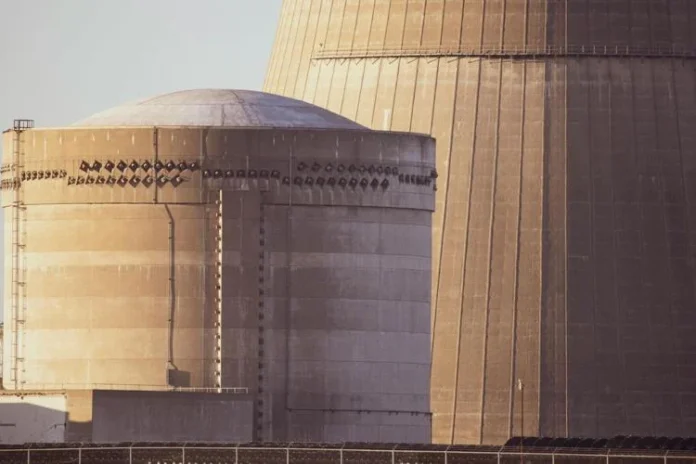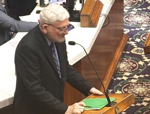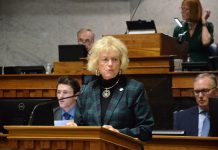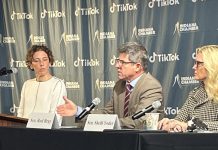Across the U.S., states want to finance nuclear energy, putting taxpayers on the hook
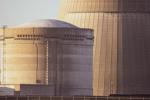
When people think of nuclear energy, they tend to think of bombs, meltdowns or the place Homer Simpson works; needless to say, it doesn’t have the best reputation.
Despite the Chernobyl disaster, Three Mile Island, Fukushima, and all the media that surrounds the conversation, nuclear energy is actually the safest form of energy in the world. That is according to Dr. Gary Was, professor of nuclear energy at the University of Michigan.
Nuclear energy during the 1950s and ‘60s amassed an unparalleled level of excitement, and it is easy to understand why, he said. People then imagined a world run through nuclear power, an infinite source of energy that could be used for everything from cars to space exploration.
In reality, the nuclear disasters were not what killed the nuclear age—they had help.
By the late 1960s and early 1970s, the first nuclear power plants broke ground on their construction, but this process didn’t go as smoothly as previously thought.
“There was a huge amount of interest. Suppliers had more orders than they could fill,” said Was. “But what happened is that the plant construction times were elongated, so the cost started going up.”
Due to the sheer scale of these projects, delays and rising costs were already putting a strain on developers’ attempts to put up nuclear power plants. Then in 1979, the Unit 2 reactor at the Three Mile Island Nuclear Plant had a partial meltdown.
“The Three Mile Island incident, although there was no harm to the public, caused the Nuclear Regulatory Commission (NRC) to change a lot of the regulations, and plants that were currently under construction had to retrofit all kinds of systems,” said Was. “That caused further delays, and that further increased the costs, and in ‘79 and ‘80, inflation hit 17-20%.”
Was explained how these factors led to nuclear energy plant construction stalling or being completely abandoned. This already volatile market for nuclear energy existed leading into April 1986, when the world stood still and all eyes shifted to a small town in Ukraine called Chernobyl.+2
The death of House Bill 1563 by Rep. Hunter Smith, R- R-Zionsville, early in the 2025 legislative session didn’t end the conversation about small…
The Chernobyl nuclear disaster was the last nail in the coffin for the development of nuclear energy for the rest of the 20th century.
By the turn of the 21st century, a new development in nuclear technology led to a resurgence of nuclear power across the country when generation IV nuclear reactors were introduced. These new reactors promised to be safer, more efficient and more cost effective.
“Utilities started ordering and planning to build plants again,” said Was. “They filed applications to the NRC for construction and licensing and operation permits.”
Fifteen states (none of them Indiana) planned to construct around 37 nuclear power plants in 2007. But only a year later, nuclear energy hit another road bump when the 2008 financial crisis stalled the proposed construction projects.
“In 2011, Fukushima hit, and so those two occurrences completely squashed things,” said Was. “Out of the 37 plants planned, we got two here. That’s it.”
Of the 37 plants planned, the only two to be completed are located in Tennessee and Georgia.
According to the U.S. Energy Information Administration (EIA), the U.S. completed two nuclear power plants in the 2000s, but the total number of nuclear plants in the U.S. has decreased from its peak number of 112 to 92 in 2022.
In 2019, nuclear energy was producing more electricity than ever before due to advancements and updates to existing plants while operating costs continued to drop, according to the EIA.
While proponents say nuclear energy is incredibly efficient and lucrative, the development time for a facility takes so long that outside economic factors (and public sentiment) kill the majority of the proposed projects. As Was said, this seems to be the crux of why the history of nuclear energy has been such a “roller coaster.”
What’s an SMR?
Small modular nuclear reactors or SMRs are a type of nuclear power plant that is exactly what the name suggests—small.
According to the International Atomic Energy Agency, an SMR produces about half the electricity of a traditional nuclear power plant and is a fraction of the size. +2
Talk to Texas lawmakers about nuclear energy, and they will stress energy
“Small modular reactors take a lot of lessons from existing conventional reactors,” said Katy Huff, former assistant secretary of nuclear energy at the U.S. Department of Energy and current professor of nuclear engineering at the University of Illinois at Urbana-Champaign. “They try to package them in a way that will be more reliable, affordable and quick to deploy.”
Huff said SMRs could solve the biggest issue plaguing nuclear energy: the cost.
“It’s not really about the nuclear technology so much as it is about the complexity of building big stuff,” she said.
Building a traditional nuclear reactor isn’t like putting up a wind farm—it’s a mega-project. They run into the same problems as proposed high-speed railways, airports and Boston’s infamous Big Dig.
SMRs change the game because they are smaller and can have parts produced in a factory, then sent to the location—unlike traditional reactor parts manufactured on site.
“I think we will be building them more like airplanes than airports,” said Huff.
Despite the tantalizing idea, SMRs are still unproven technology, and even if they do solve the economic issues surrounding nuclear energy, many people are concerned about safety
But it turns out that nuclear energy is one of the safest forms of energy production when looking at deaths compared to the energy produced, according to Huff.
Three Mile Island had zero deaths, she said. Fukushima had zero deaths related to the meltdown. Chernobyl claimed the lives of over 28 people and caused severe environmental damage across Eastern Europe.
These stats pale in comparison to fossil fuels. The World Health Organization has reported that air pollution from fossil fuels is responsible for 6.7 million premature deaths per year.
“Nuclear compared to everything else, simply by being emissions free, does an incredible job of keeping people safe,” she said. “The regulator ensures that we don’t have commercial nuclear accidents in the United States.”
Huff also explained that SMRs relative to traditional nuclear reactors have the potential to be even safer. Because they are smaller, it means fewer parts that can malfunction. They also have the added benefit that if they need to be shut down, the heat left in the core of the reactor is much less than a traditional reactor.
However, Austin Cooper, a professor of technological history with a focus on nuclear energy at Purdue University, talked about his concerns with SMRs.
“The best thing we could do is have an informed conversation about what are the tradeoffs, what are the relevant factors, ” said Cooper. “Sometimes the glory of nuclear energy outshines the reality. You’re just boiling water.”
Cooper stated that this nuclear potential could have us abandon other energy alternatives like wind and solar.
“I fear that ‘nuclear exceptionalism’ has influenced the SMR conversation, where people are treating SMRs as a magic bullet because they are nuclear,” he said.
He also said the goal of projects like SMRs should not be to grow nuclear energy as much as have carbon-free reliable energy.
“If wind and solar plus storage can get you there more cheaply than nuclear, I don’t see why you would write that off,” he said.
The Statehouse File is publishing this article as part of the Statehouse Reporting Project, a collaborative effort by collegiate journalism programs operating in statehouses across the country.
Schyler Altherr is a reporter for TheStatehouseFile.com, a news site powered by Franklin College journalism students.


